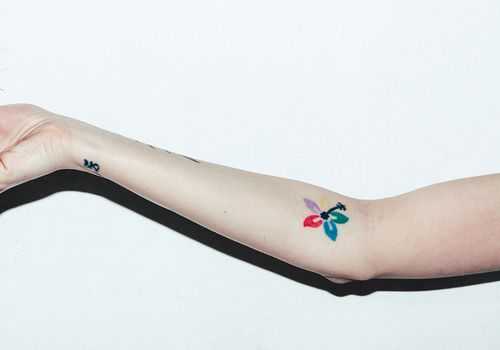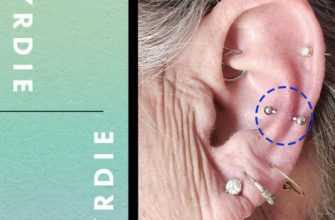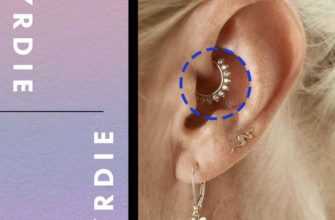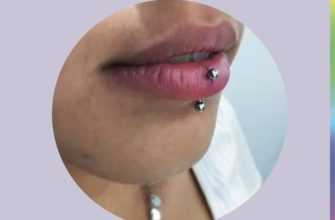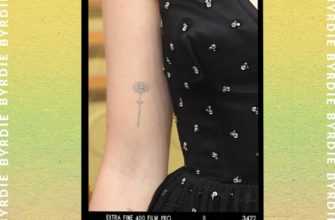In This Article
Avoid Wool Bentonite Clay Masks OTC Creams and Balms See A Doctor
[Editor’s Note]: This discussion is not in reference to the inevitable itchiness of fresh and healing tattoos. Itching is a natural part of a tattoo’s healing process, and often occurs within one to two weeks of getting tattooed. Once a tattoo is fully healed, it likely should not become itchy again.
I started getting inked the day I turned eighteen, and have acquired pieces from at least a dozen artists over the years. Throughout my tattoo journey, I’ve made sure to only go to artists who use high quality, organic ink. But despite my focus on doing something innately unnatural with as natural of ingredients as possible, I’ve had as many issues with the red ink in two of my colorful tattoos as many other tattooed people experience. Meaning I’ve encountered bumps, rashes, slow healing speed, and general itchiness in the red—and only in the red—parts of my body art. As a person who luckily has no allergies to anything else in the world, this has always surprised me.
Red dye is notorious for causing problems, whether injected into our skin or eaten in our food. Red food dye can be entirely lab created, which is usually the format of artificial food color Red Dye #40, or less artificially made from the cochineal bug and called carmine. Both are highly allergenic, with carmine being so particularly problematic for some people that it must be labeled as such, and not just as red dye, on packaging.
In this vein, the allergenic potential for red ink in tattoos is also considered more severe than for other tattoo ink colors (though any color of tattoo ink may possibly cause allergic reaction, just like any food dye can). Because red pigment has great staying power (think of how red hair dye is harder to fully remove than other colors), it tends to be used heavily in tattoo work. Not only are tattoos with red ink more likely to be itchy long term, allergies to red ink are typically more severe than allergies to other colors. A 2018 study notes that “allergic contact dermatitis is the most common hypersensitivity reaction to tattoo ink, with red pigments representing the most common cause of tattoo-related allergic contact dermatitis.”
Heavy metals in red ink are often believed to be the reason it’s so difficult on our bodies. A mercury-based metal called cinnabar used to be common in red ink, but that is no longer commonly used. According to the same 2018 study, “more recently, mercury-free organic pigments (eg, azo dyes) have been used in polychromatic tattoos due to their ability to retain color over long periods of time,” which makes it seem like metals should no longer be an issue. They go on to state, however, that “the composition of these new organic red tattoo pigments varies, but chemical analysis has revealed a mixture of aromatic azo compounds (eg, quinacridone), heavy metals (eg, aluminum, lead, cadmium, chromium, cobalt, iron, titanium), and intermediate reactive compounds (eg, naphthalene, 2-naphthol, chlorobenzene, benzene).”
Red tattoo ink is troublesome enough science has studied the dermatological problems from red ink and their potential medical intervention solutions. The problems go beyond just skin reactions, though, with actual cancer entering this cautionary tale. Doctors have seen patients exhibit skin cancer tumors (aka carcinoma) in only the red parts of their tattoos, which may be made worse by ultraviolet light. Reactions to red tattoo ink aren’t necessarily immediate, but rather, can occur at any time. The American Academy of Dermatology, in addition to its mention that red ink is the most likely color to be allergenic, states allergic reactions can occur “immediately, weeks or years later” or even “decades afterward.” There are even internet tales of red ink reactions that occurred over a decade after a person got a tattoo.
It isn’t an issue of ink quality to blame. In the referenced carcinoma patient above, organic, vegan, cruelty-free Eternal Ink had been used for the patient’s tattoo. That’s the brand artists I go to use, and it’s considered a gold standard for quality in the tattoo artist world. Eternal Ink even goes above and beyond any laws around sterility, and has their tattoo inks certified sterile, according to the brand.
Not a fan of body art? You still may have cause for concern: red pigment in permanent makeup is also more likely to be a problem than other permanent makeup tattoo ink colors. Because red is included in more common colors like brown, it may be difficult to completely avoid red ink in your permanent makeup.
Now that you know the red ink in your tattoos is prone to itchiness (and worse!), and that reactions to it may be caused by the heavy metals and/or reactive compounds in red ink, which can be coupled to cause elevated allergies to those metals, what can you do? Here are a few ideas, beyond the obvious suggestions of avoiding red colors in your future body art pieces and making sure to keep your tattoos meticulously clean and moist throughout the healing process.
Avoid Wool
Scratchy fabrics can aggravate your tattoos; I discovered this when I got a mostly-red tattoo just above my ankle in the winter and made the mistake of wearing woolen socks. My tattoo exploded into a mess of itchy red bumps within hours, and even with assorted anti-itch creams took about a week to stop being painful.
Few people are truly allergic to wool, but that’s a small possibility as well. If you do have a wool allergy, you probably are also sensitive to lanolin, a sheep derivative found in lotions, so it’d be wise to not use those at all, let alone on your tattoos (which otherwise benefit from moisturizing).
Bentonite Clay Masks
It was at an appointment with a naturopath that this odd but highly effective suggestion entered my world, and has been a mainstay of it since. Bentonite clay is claimed to detoxify heavy metals and has been to aid in skin healing. When used on tattoos, you might experience a noticeable brightening of them after, especially if they’re older. I use a simple mix of clay with enough apple cider vinegar to create a paste, and leave it on until hardened the same way you would with a clay face mask. While this of course should never be done on a new tattoo that’s still healing, it should be safe for any body art that has long since healed.
OTC Creams and Balms
Hydrocortisone is an effective agent against itchiness, and may help alleviate the discomfort caused by red tattoo ink. If you’re experiencing a contact dermatitis reaction to the red ink, an over the counter cortisone cream may help to soothe the rash from it.
See A Doctor
If the itchiness in your red tattoos persists despite home treatments or if it worsens—and especially if it grows any sort of nodule—you’ll need to visit a dermatologist for more intensive treatment.
Does all of this mean that everyone should avoid red ink in their tattoos because of the increased allergy risk? Personally, the itchiness is occasional enough that while I wouldn’t get any more predominantly red pieces like the two Banksy ones I have, I do continue to have it included in my multicolored tattoos when I get new ones. The strawberries on my arm, the red petal of the large rainbow flower around my belly button that I’ve had for over twenty years, and the cross stitch fox on my leg have never had any problem. The same Eternal Ink brand was used for all of those, but they’re from different artists than my red-heavy Banksy leg ones.
There’s no evidence that tattooing methods have anything to do with skin reactions, or that the specific placement on your body matters, either, so there’s no simple explanation for why some red body art pieces get itchy while others don’t. My tattoos bring me so much joy, and I’m well aware that they’re a less healthful indulgence than most other hobbies of mine. We all pick our battles, and colorful tattoos are one of mine…even if a couple of them do occasionally call for some TLC.
Article Sources Byrdie takes every opportunity to use high-quality sources, including peer-reviewed studies, to support the facts within our articles. Read our editorial guidelines to learn more about how we keep our content accurate, reliable and trustworthy.

